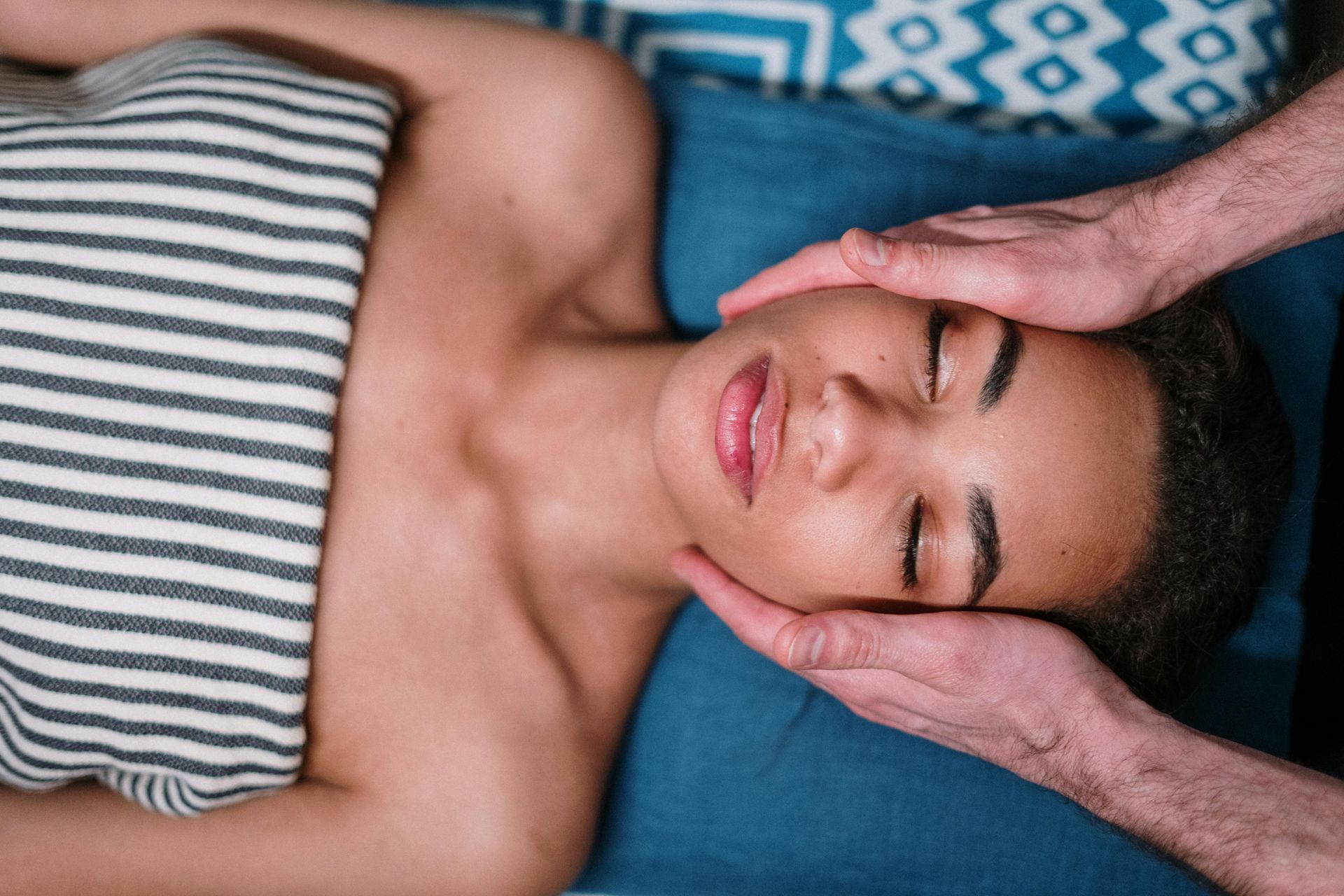New Year, NEW You (How to establish good habits)
- By Grappin Clinic
- •
- 30 Dec, 2024
- •
Keeping Up with New Habits and Building New Habits into your Life for the New Year

Almost all New Year resolutions fail after January 1st. This is usually because people try to change too many things at once, or they don’t have a good plan for how to stick to their resolution. That’s why it’s important to establish good habit formation techniques this New Year.
Another way to make good habits is by setting realistic goals. Don’t try to completely overhaul your lifestyle overnight – this is more likely to lead to failure. Start with one change, and once that becomes a habit, add another change. And be patient – it can take a while for new habits to form.
It’s also important to be mindful of your triggers. What situations or emotions cause you to slip up and revert back to your old habits? Once you know what your triggers are, you can find ways to deal with them before they cause you to fall off track.
Finally, don’t be too hard on yourself if you mess up occasionally. We all make mistakes sometimes, but it’s important not to let one setback turn your plans upside down!
What is a Habit?
In psychological terms, a new habit forms once you act on a daily basis with minimal awareness of how they are going, like for example how you learned to brush when you were a kid and now it’s automatic. Routines like showering, driving and making your bed are other great examples of habitual behaviors.
Positive habits can be helpful because they make life easier and more automatic. They allow us to focus on other things by taking care of routines we’ve done so many times that we don’t have to think about them.
Understanding Positive Habit Formation
Habits are hard to break because they’re created by a series of neurological events that happen automatically. The first time you do anything, it’s novel and exciting, so your brain is flooded with dopamine, one of the brain chemicals associated with pleasure and reward. This is also known as the habit loop. Over time, however, this activity becomes routine and the novelty wears off—but the neural pathways in your brain still remember how to perform these actions. And when something is repeated over and over again without any changes in response…well…you guessed it: That’s a new habit!
There is no reward too complex. Repeating is vital for the human brain for reward. Only if the brain expects something that can induce happiness when they experience an endorphin release.
Types of Positive Habits
There are three types of habits: bad, good and neutral. Bad habits are self-destructive behaviors that cause harm physically or emotionally, like smoking, eating junk food or overspending. Good habits are healthy behaviors that improve our lives.
Thinking about the popular new year healthy habits, some examples are:
1) Eat less meat
2) Drink more water
3) Get in shape and lose weight
4) Eat less sugar and carbs – eating healthy
5) Get better sleep
6) Spend less time online
7) Quit smoking
8) Be more conscious about my eating habits and what I put in my body
9) Write in a journal daily or at least once a week
How Long does it take to Form a New Habit?
There are several theories on how long it actually takes to form a new habit. The time it takes for a behavior to become habitual is different for every single person. The average length of time seems to be around 66 days, but some people report the number being as little as 18 days while others take more than 200 days! Then you start to do these actions with little or no thought.
So, why is there such a discrepancy in the amount of time it takes to form a new habit? There are many factors that contribute to how long it actually takes for a behavior to become habitual, including:
The person’s natural tendencies and personality are wired to form habits more quickly, while non-habitualizers need more time. For example, the habitualizer may only have to perform a certain action seven times before it becomes an automatic behavior – whereas the non-habitualizer might require thirty or even sixty repetitions of that same behavior!
For some people it is the environment that helps to form a habit – it can improve the level of motivation to change the behavior.
There are many different ways to make good habits in your life. One of the best ways is to find a way to make it fun. For example, if you want to start going to the gym, try signing up for a class that you’re interested in, like martial arts or dance. Or if you want to start eating healthier, try cooking new recipes or joining a healthy cooking club.
It’s also important to be mindful of your triggers. What situations or emotions cause you to slip up and revert back to your old habits? Once you know what your triggers are, you can find ways to deal with them before they cause you to fall off track.
Finally, don’t be too hard on yourself if you mess up occasionally. We all make mistakes sometimes, but it’s important not to let one setback turn your plans upside down!
If you want a successful habit to be developed, it makes sense to understand the principles of our habits. We’ll discuss the scientific knowledge behind forming a new habit and what can be done for keeping up with new habits!
In psychological terms, a new habit forms once you act on a daily basis with minimal awareness of how they are going, like for example how you learned to brush when you were a kid and now it’s automatic. Routines like showering, driving and making your bed are other great examples of habitual behaviors.
Positive habits can be helpful because they make life easier and more automatic. They allow us to focus on other things by taking care of routines we’ve done so many times that we don’t have to think about them.
Understanding Positive Habit Formation
Habits are hard to break because they’re created by a series of neurological events that happen automatically. The first time you do anything, it’s novel and exciting, so your brain is flooded with dopamine, one of the brain chemicals associated with pleasure and reward. This is also known as the habit loop. Over time, however, this activity becomes routine and the novelty wears off—but the neural pathways in your brain still remember how to perform these actions. And when something is repeated over and over again without any changes in response…well…you guessed it: That’s a new habit!
There is no reward too complex. Repeating is vital for the human brain for reward. Only if the brain expects something that can induce happiness when they experience an endorphin release.
So if you want to change a bad habit or create a new good one then follow these steps: 1) Make an intention 2) Choose what needs changing 3) Break down into small actionable steps 4) Practice, practice, practice 5) Reward yourself along the way (get that habit loop!)
There are three types of habits: bad, good and neutral. Bad habits are self-destructive behaviors that cause harm physically or emotionally, like smoking, eating junk food or overspending. Good habits are healthy behaviors that improve our lives.
Thinking about the popular new year healthy habits, some examples are:
1) Eat less meat
2) Drink more water
3) Get in shape and lose weight
4) Eat less sugar and carbs – eating healthy
5) Get better sleep
6) Spend less time online
7) Quit smoking
8) Be more conscious about my eating habits and what I put in my body
9) Write in a journal daily or at least once a week
10) Meditate or do yoga at least once a day
There are several theories on how long it actually takes to form a new habit. The time it takes for a behavior to become habitual is different for every single person. The average length of time seems to be around 66 days, but some people report the number being as little as 18 days while others take more than 200 days! Then you start to do these actions with little or no thought.
So, why is there such a discrepancy in the amount of time it takes to form a new habit? There are many factors that contribute to how long it actually takes for a behavior to become habitual, including:
The person’s natural tendencies and personality are wired to form habits more quickly, while non-habitualizers need more time. For example, the habitualizer may only have to perform a certain action seven times before it becomes an automatic behavior – whereas the non-habitualizer might require thirty or even sixty repetitions of that same behavior!
For some people it is the environment that helps to form a habit – it can improve the level of motivation to change the behavior.

Putting what we Know into Practice
Now that we know what habits are and how they are formed, we can set our goals and find ways to positively reward ourselves. Getting into a proper routine and repeating is vital for the way habits form and for ensuring habits stick.
If we think about the habits list above, what would be your ‘rewards’ for when you successfully do a habit action, for example when you start exercising or quit smoking?
What’s the Difference between Habits and Routines?
A routine is a set pattern of behavior involving things like what you do, where you are, who you talk to, when you learn or work. Habits can be routines in plain sight- something that becomes so ingrained it becomes invisible, but the behavioral feedback loop becomes powerful in shaping our lives. Habit loops typically fit into one of four categories: eating (such as snacking), cognitive (such as making decisions), emotional (such as handling anger) and physical (active).
The difference between habits and routines is that routines can form because of natural repetition; while habits rely on reinforcement by giving yourself an incentive for doing the habit each time – like exercise. A habit takes less conscious thought than a routine does since your body knows how to react to the habit, you don’t have to force your body into motion.
When we say an action is a habit it has become part of who we are and what we do by rote. We perform such actions without thinking about them or considering their impact on our lives. For example, if you drive to work every day you probably don’t think about the route you take, or how you’re going to get there. You just do it. That’s a habit.
Routines are important because they help us conserve mental energy and focus on more important things.
Anticipating Pitfalls
When starting off, take small steps and, say, do 30 minutes of exercise and build up to an hour. Keep enjoying to get those positive habits and for habit formation to take place.
Keeping an active lifestyle requires knowing where you stand for potential hazards. These suggestions provide the information you should make when making a mistake. It aims to start small and easily, grow in 30 minutes, and then into an hour. I find exercising should be done regularly rather than as much as possible when possible, this way you get something right away. Ideally, if you focus more on that goal then you do this ritual again. The organization created the conditions which encourage accountability and accountability.
No one is going to say changing habits is easy, but again keep your expectations low so you can keep making your new habit stick.
Set your Intentions
Choose your goal, your intention and make it achievable and realistic. Let’s not say we are going to run 10 miles every day if we have not been doing even 1 mile regularly!
Choose goals that matter to you so you have some reason to want to keep going. A goal that was created by you for make others feel happy, to fulfill their values, can result in frustration, anger, and resentment for themselves and others. This time it’s all about YOU!
Changing the Habit Loop
It can be helpful to give yourself variety in the new routine, for example if you are looking to do more exercise, try different ones, and with each giving you the positive feedback and reinforcement to make you want to do it again!
Surround Yourself with Supportive People
Support from friends and colleagues will ensure a stickiness that you are able to get. Findings showed there are many health improvements with the help of friends who supported ones goals. These days with the rise of social and community apps, you can get peer support in your objectives. That’s why it’s quite common to see ‘leaderboards’ and apps asking you to share your goals or setup a group to have support from friends when you feel overwhelmed.
Prepare for Roadblocks
Don’t worry if things don’t work to plan – I think here the old phrase ‘perfection is the enemy of good’ comes to mind. Especially when trying to kick bad habits, behavioral scientists and research shows not to get demotivated if you ‘fall off the wagon’. Just pick yourself up and try again! There must have been some reason you did not do you habit that day, so rather than fighting it, think about what you will do different.
In Silicon Valley we have the phrase there is no such thing as failure, and that’s true here. It’s all part of your learning process in developing a new habit. Just try and stay consistent as far as possible, and try and stay away from that fast food 😉
Start Small
Create an Affirmation
Affirmations can help on the psychological level, to give you the mental motivation – and usually there are positive changes 🙂 Creating an affirmation is also effective for calming off nerves!
An example of an affirmation might be:
“I am confident and in control. I can do anything I set my mind to. I am happy and fulfilled. Everything is working out for my highest good. Thank you (your name)”
Excerpt from article Originally Posted On: https://notedexapp.com/blog/keeping-up-with-new-habits
Now that we know what habits are and how they are formed, we can set our goals and find ways to positively reward ourselves. Getting into a proper routine and repeating is vital for the way habits form and for ensuring habits stick.
If we think about the habits list above, what would be your ‘rewards’ for when you successfully do a habit action, for example when you start exercising or quit smoking?
What’s the Difference between Habits and Routines?
A routine is a set pattern of behavior involving things like what you do, where you are, who you talk to, when you learn or work. Habits can be routines in plain sight- something that becomes so ingrained it becomes invisible, but the behavioral feedback loop becomes powerful in shaping our lives. Habit loops typically fit into one of four categories: eating (such as snacking), cognitive (such as making decisions), emotional (such as handling anger) and physical (active).
The difference between habits and routines is that routines can form because of natural repetition; while habits rely on reinforcement by giving yourself an incentive for doing the habit each time – like exercise. A habit takes less conscious thought than a routine does since your body knows how to react to the habit, you don’t have to force your body into motion.
When we say an action is a habit it has become part of who we are and what we do by rote. We perform such actions without thinking about them or considering their impact on our lives. For example, if you drive to work every day you probably don’t think about the route you take, or how you’re going to get there. You just do it. That’s a habit.
Routines are important because they help us conserve mental energy and focus on more important things.
Anticipating Pitfalls
When starting off, take small steps and, say, do 30 minutes of exercise and build up to an hour. Keep enjoying to get those positive habits and for habit formation to take place.
Keeping an active lifestyle requires knowing where you stand for potential hazards. These suggestions provide the information you should make when making a mistake. It aims to start small and easily, grow in 30 minutes, and then into an hour. I find exercising should be done regularly rather than as much as possible when possible, this way you get something right away. Ideally, if you focus more on that goal then you do this ritual again. The organization created the conditions which encourage accountability and accountability.
No one is going to say changing habits is easy, but again keep your expectations low so you can keep making your new habit stick.
Set your Intentions
Choose your goal, your intention and make it achievable and realistic. Let’s not say we are going to run 10 miles every day if we have not been doing even 1 mile regularly!
Choose goals that matter to you so you have some reason to want to keep going. A goal that was created by you for make others feel happy, to fulfill their values, can result in frustration, anger, and resentment for themselves and others. This time it’s all about YOU!
Changing the Habit Loop
It can be helpful to give yourself variety in the new routine, for example if you are looking to do more exercise, try different ones, and with each giving you the positive feedback and reinforcement to make you want to do it again!
Surround Yourself with Supportive People
Support from friends and colleagues will ensure a stickiness that you are able to get. Findings showed there are many health improvements with the help of friends who supported ones goals. These days with the rise of social and community apps, you can get peer support in your objectives. That’s why it’s quite common to see ‘leaderboards’ and apps asking you to share your goals or setup a group to have support from friends when you feel overwhelmed.
Prepare for Roadblocks
Don’t worry if things don’t work to plan – I think here the old phrase ‘perfection is the enemy of good’ comes to mind. Especially when trying to kick bad habits, behavioral scientists and research shows not to get demotivated if you ‘fall off the wagon’. Just pick yourself up and try again! There must have been some reason you did not do you habit that day, so rather than fighting it, think about what you will do different.
In Silicon Valley we have the phrase there is no such thing as failure, and that’s true here. It’s all part of your learning process in developing a new habit. Just try and stay consistent as far as possible, and try and stay away from that fast food 😉
Start Small
The Psychological Research Association recommends breaking the overall larger goal into manageable achievable goals. I recommend defining goals for two weeks to begin with and you can achieve any habit change, then in seven days you can decide whether you have reached this level or not.
Affirmations can help on the psychological level, to give you the mental motivation – and usually there are positive changes 🙂 Creating an affirmation is also effective for calming off nerves!
An example of an affirmation might be:
“I am confident and in control. I can do anything I set my mind to. I am happy and fulfilled. Everything is working out for my highest good. Thank you (your name)”
Note that you are speaking to your SELF. There are many different types of affirmations, and it’s important to find the ones that work best for you. Such as: "I CHOOSE TO BE WELL" , "I CHOOSE TO BE HAPPY"
....

There are various types of massage therapies, including sports massage, trigger point massage, deep tissue massage, and Swedish massage. Although these treatments can range in pressure, they all offer invaluable benefits for the body, mind, and spirit. Read on for the top six benefits of massage therapy.

Are you looking for a new, effective way to improve your physical health? Medical massage therapy is here to provide the natural health benefits you need. From optimizing circulation to relieving muscle tension and inflammation, medical massage is a powerful treatment for pain reduction and overall wellness.























